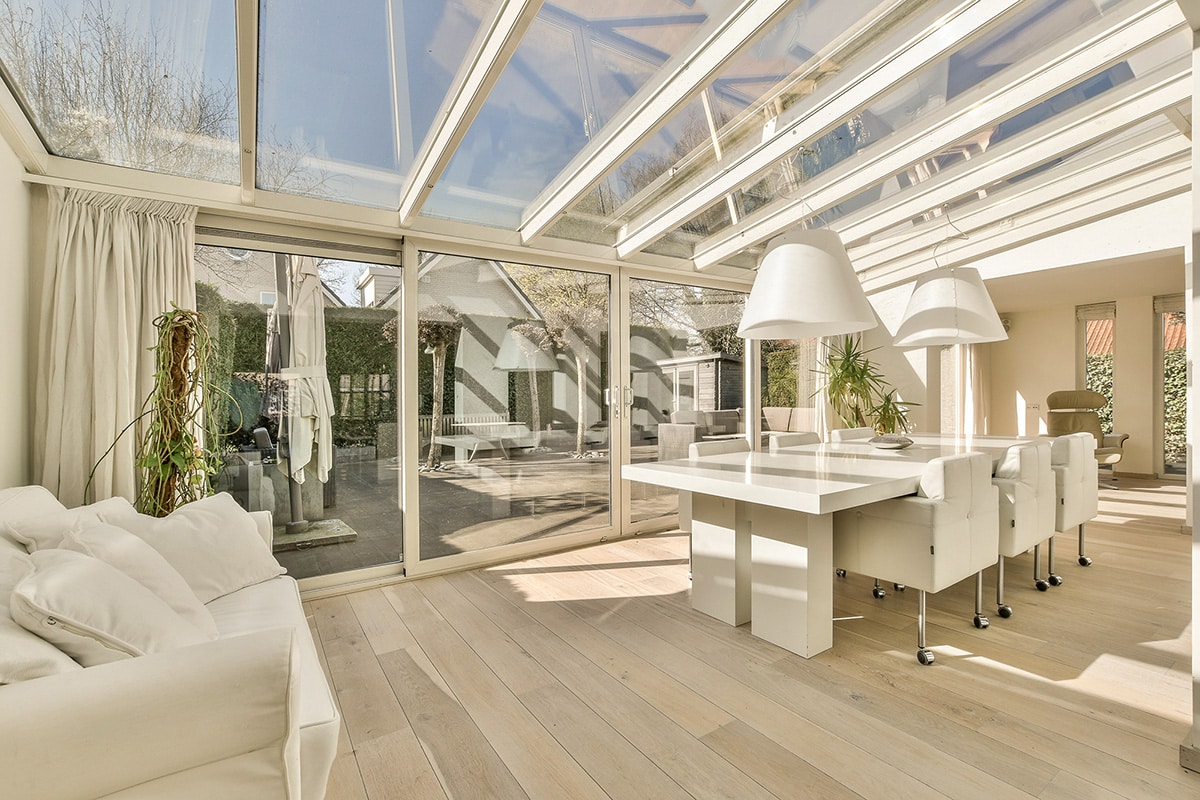Tips to enjoy outdoor living – all year round
Barbecuing with family and friends, peacefully reading an exciting book, working in your home office – the possibilities for making good use of a terrace, gazebo or conservatory are extremely diverse. Our expert explains how you can make your dream of a “garden room” come true.
Tip 1: Carefully plan the location of your garden room
Naturally, the optimum location of your garden room depends on its use. If you want to set up a studio or a workshop, you may be better off on the north side. For socializing or entertaining guests after work, south and west sides are ideal. The space could also be used as a breakfast room, in which case it should be facing east. Regardless of the location – in any case, it is important for terrace and conservatory to be equipped with a shading device. Otherwise, there will be the risk of overheating in summer. For enclosed conservatories, it is also essential to ensure proper ventilation in the form of vent holes.
Tip 2: Decide on the type of outdoor area
If you want to spend as much time as possible surrounded by nature, there are several options, for example a terrace, a gazebo or a conservatory. Nowadays, an open terrace can be easily transformed into an enclosed conservatory by simply covering the terrace with a roof of adjustable louvre blades and screening it in on the sides with flexible glazing. Depending on the temperature and your personal preferences, the space can then be closed or opened up as much as this is necessary or wanted. Also pay attention to other details that contribute to your well-being, such as integrated LED-based lighting. The flooring is also a key contributor to comfort. Usually, the floors of terraces and conservatories are covered with tiles or natural stone. But you may also consider installing parquet, laminate or vinyl flooring.
Tip 3: Only use installation products that ensure a healthy home
Whether stone, tiles or wood: When installing the floor, you should exercise the same care as when planning the outdoor room as a whole. These days, housebuilders and renovators are attaching more and more importance to a healthy living environment. You should therefore make sure that all mortars, primers, adhesives and grouts used are as low-emission as possible, especially if they are used indoors.
The EMICODE® label provides useful guidance in this respect. It is a vendor-neutral quality seal that is only awarded to building products with the lowest possible emissions. To ensure maximum consumer safety, independent laboratories continuously monitor through unannounced spot checks whether the manufacturers comply with the required limit values. This makes the EMICODE® label a reliable indicator of which building materials can be safely used for enjoying a healthy indoor climate in your conservatory.

Photo: ©Casa imágenes adobe.stock /GEV
Do You Have Questions?
If you have any questions on certain topics or want to contact us for another reason, please contact us by phone or email.
Phone: +49 (0)211 843 449 – 01
info@emicode.com
Share article on Social Media:
